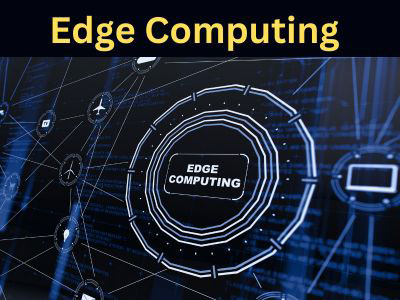Is Edge Computing Safe?
Key Takeaway
Edge computing can be safe if proper security measures are implemented. By processing data locally, it reduces the risks associated with transmitting sensitive information to centralized servers. However, edge devices are often exposed to vulnerabilities, such as cyberattacks and unauthorized access, making robust security essential.
To enhance safety, organizations can use encryption, firewalls, and regular updates to safeguard edge devices from threats. Adopting best practices like strong authentication protocols and continuous monitoring can further secure deployments. While edge computing poses unique challenges, following proper strategies ensures it remains a safe and effective solution.
Security Challenges in Edge Computing
Edge computing brings computation and data storage closer to the source, offering unparalleled advantages like reduced latency and enhanced speed. However, this decentralized nature introduces unique security challenges. Unlike traditional centralized systems, edge architectures involve numerous devices operating across different locations, significantly expanding the attack surface for cyber threats.
One major challenge is device vulnerabilities. Many edge devices, such as sensors or IoT gadgets, lack robust security features due to their limited computing power. This makes them easy targets for hackers aiming to exploit weak links in the network. Additionally, the data traveling between edge devices and central systems can be intercepted if communication channels are not adequately secured.
Another critical issue is the risk of physical tampering. Since edge devices are often deployed in remote or unsecured locations, they are more susceptible to being physically accessed or manipulated by malicious actors. These vulnerabilities highlight the importance of implementing strong security measures tailored to edge environments.

Benefits of Localized Data Processing
Despite its challenges, edge computing offers significant security benefits through localized data processing. By keeping data closer to its source, edge computing minimizes the need for extensive data transmission, reducing exposure to cyber threats during transit. This is particularly beneficial for applications requiring sensitive data, such as healthcare or financial systems.
Localized processing also allows for quicker detection of anomalies. When data is analyzed at the edge, security breaches or irregularities can be identified and addressed in real-time, reducing potential damage. For example, an edge-enabled surveillance system can instantly detect and respond to suspicious activity without waiting for cloud analysis.
Furthermore, edge computing supports data segmentation, allowing sensitive information to remain within specific locations. This reduces the risk of data breaches affecting entire systems. By processing data locally, edge computing adds an additional layer of privacy and control that centralized systems often struggle to achieve.
Safeguarding Edge Devices from Cyber Threats
Securing edge devices is crucial for maintaining the overall safety of an edge computing network. Given their vulnerability to attacks, proactive measures are essential to ensure these devices remain protected. One of the most effective ways to safeguard edge devices is through firmware updates. Regularly updating device software ensures that known vulnerabilities are patched, reducing the risk of exploitation.
Another key strategy is implementing device authentication protocols. By requiring edge devices to authenticate themselves before accessing the network, organizations can prevent unauthorized access. Encryption also plays a vital role in securing data transmissions between edge devices and central systems.
Deploying intrusion detection systems (IDS) at the edge can further enhance security by monitoring network traffic for signs of malicious activity. Additionally, edge devices should be equipped with tamper-proof hardware and secure boot processes to prevent unauthorized modifications. These measures collectively create a more resilient edge infrastructure.
Best Practices for Securing Edge Deployments
Ensuring the safety of edge computing environments requires a combination of strategic planning and technological solutions. A foundational best practice is conducting a risk assessment. Organizations should evaluate the potential threats to their edge deployments and design security measures tailored to their specific needs.
Segmentation is another critical practice. By dividing the edge network into smaller, isolated segments, organizations can contain breaches and prevent them from spreading across the entire system. For example, an industrial facility might isolate its production line from its administrative systems to minimize risk.
Adopting a zero-trust security model is increasingly popular for edge computing. This approach assumes that every device, user, or network request could be a potential threat and requires continuous verification. Additionally, employing edge-specific firewalls and leveraging AI-driven security solutions can help detect and mitigate sophisticated attacks in real-time.
Regularly training personnel on cybersecurity best practices and conducting security audits further strengthen edge deployments. These steps ensure that edge systems remain robust against evolving threats while maintaining their operational efficiency.
Regulatory Implications of Edge Security
The rise of edge computing has significant regulatory implications, especially regarding data protection and privacy. Many industries, such as healthcare and finance, operate under strict regulations like HIPAA or GDPR, which require organizations to handle data securely and transparently. Edge computing’s decentralized nature can make compliance more complex but also offers unique opportunities for meeting these standards.
For instance, edge computing allows sensitive data to remain within specific geographic regions, aiding compliance with data residency laws. However, organizations must implement measures to ensure that local processing does not compromise security or violate privacy regulations.
Regulators also emphasize the need for auditability in edge deployments. Organizations must maintain detailed logs of data processing activities to demonstrate compliance during inspections. Edge systems must be designed to support such audits without disrupting operations.
Failure to meet regulatory requirements can result in severe penalties, making it essential for organizations to align their edge security strategies with industry standards. Collaboration with regulatory bodies and adopting certified edge solutions can help businesses navigate this complex landscape effectively.
Conclusion
Edge computing introduces both opportunities and challenges in the realm of cybersecurity. While its decentralized nature can expose vulnerabilities, localized data processing offers unique security advantages. By addressing device vulnerabilities, adopting best practices, and complying with regulatory standards, organizations can create safe and resilient edge computing environments. Proper measures transform edge computing into a secure and efficient solution, balancing risks with robust strategies.

